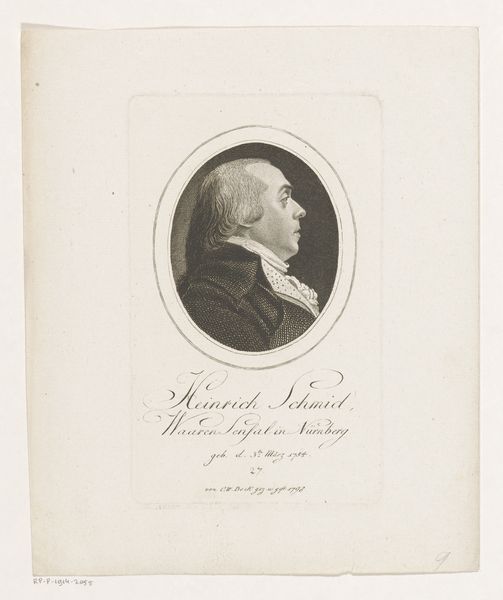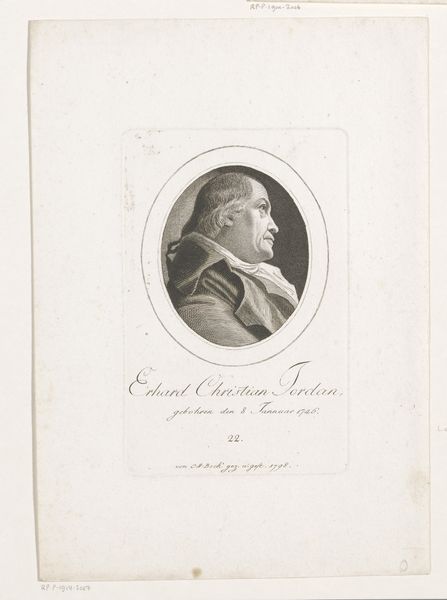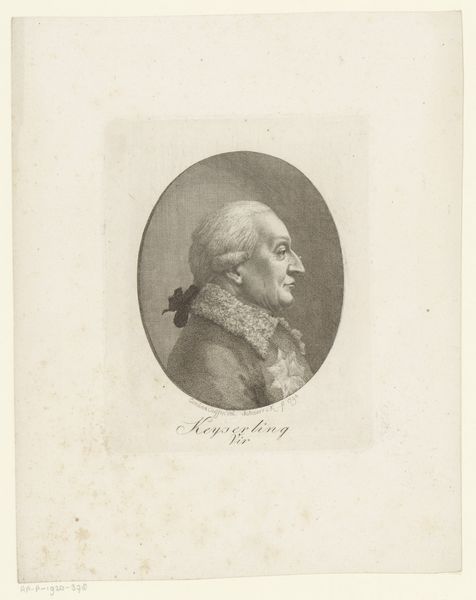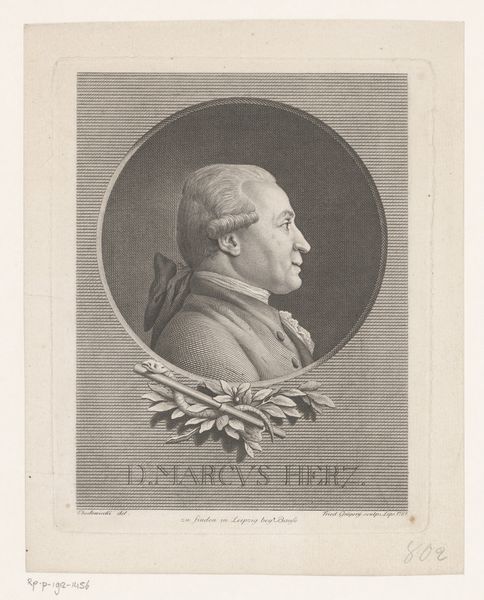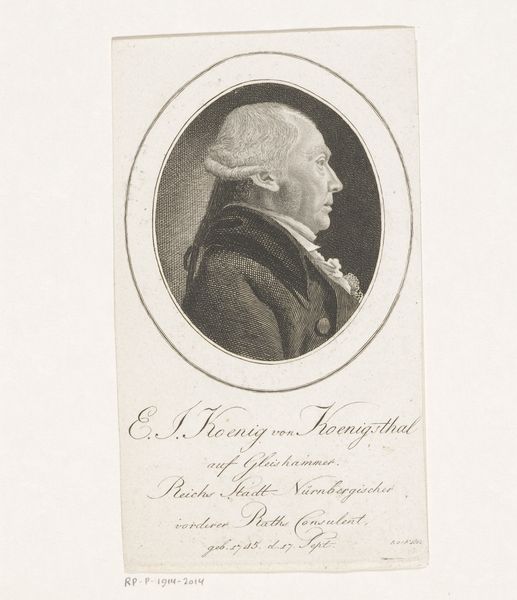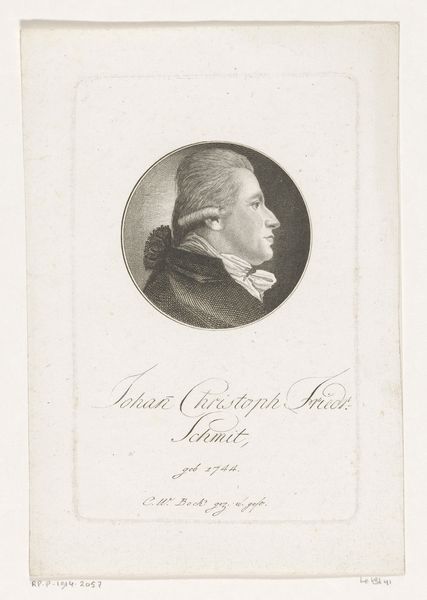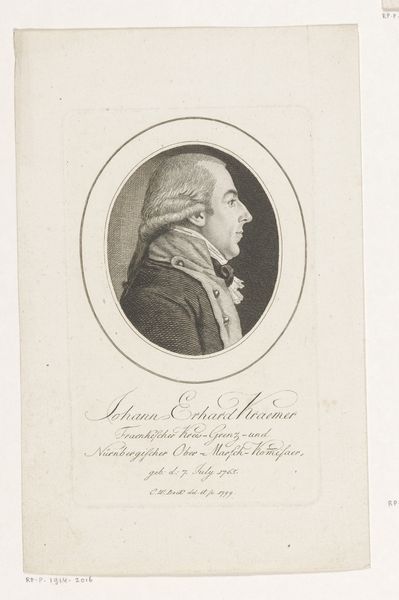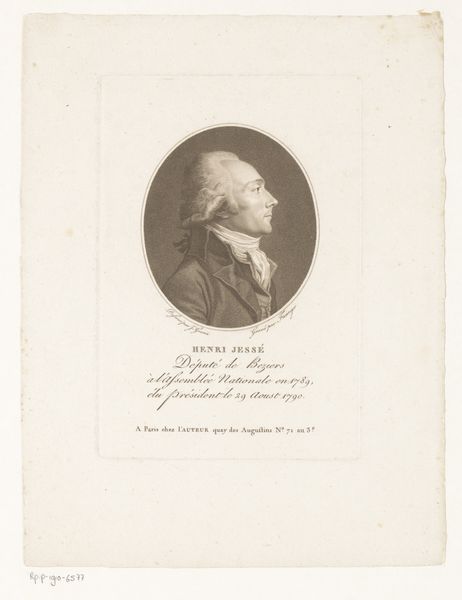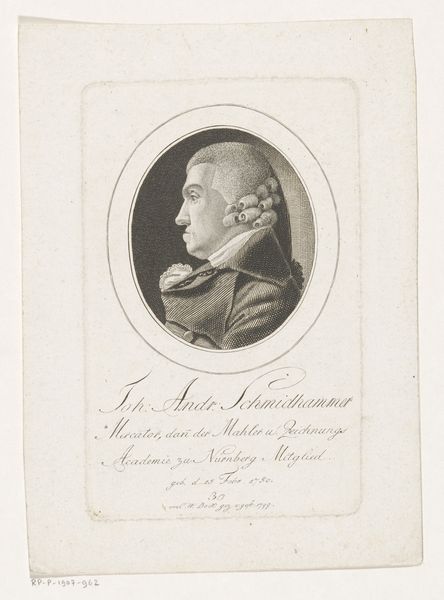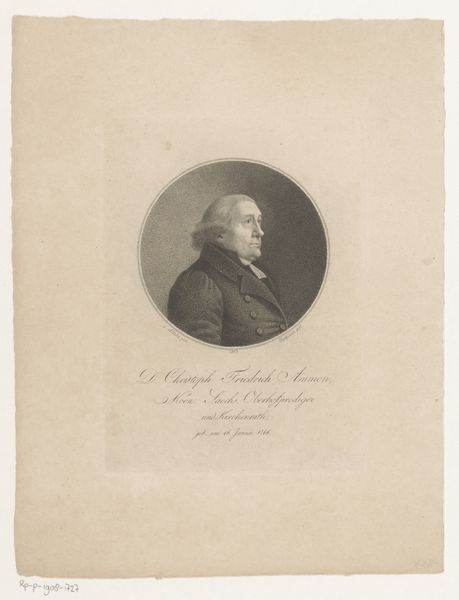
paper, engraving
#
portrait
#
neoclacissism
#
aged paper
#
toned paper
#
old engraving style
#
paper
#
engraving
Dimensions: height 151 mm, width 97 mm
Copyright: Rijks Museum: Open Domain
Curator: Here we have an engraving from 1794, a portrait of Jacob Christian Gottlieb von Schaeffer, created by Christoph-Wilhelm Bock. It's currently held in the Rijksmuseum. Editor: It feels austere, almost severe. The paper seems quite aged, giving the portrait a sense of distant authority. What can you tell me about the historical context? Curator: The engraving embodies the neoclassical style, popular at the time. Schaeffer was a well-regarded figure, so depicting him in this clean, refined manner was likely meant to convey his intellect and status. Editor: I notice the incredibly fine lines. The artist's labor is really evident when you consider that this entire image comes from patiently incising a plate. It’s amazing what level of detail they could achieve, controlling the light with only these tiny marks on metal and then transferred to the paper. Curator: Absolutely. This kind of portrait played a role in constructing and circulating an image of civic virtue, associating individuals with particular sets of values within the social landscape. Editor: Engravings such as this were not just about reproducing likeness; they also democratized the consumption of imagery. Cheaper and more accessible than paintings, prints made visual representation more broadly available. Curator: A good point. This also raises the question of what a printed likeness of someone did to their personal brand, so to speak. I wonder if Dr. Schaeffer had much say in the artistic process or in the circulation of his likeness? Editor: Well, how Bock approached the metal plate reflects that complex dance. Every intentional line contributes to not only the accuracy of Schaeffer's features but also the intended interpretation. Curator: I am also interested to understand whether Schaeffer approved the end product before the image went out into the world? Editor: Perhaps he cared less about that part and more about how these portraits reinforced social status, not the material cost or creative labour. Either way, the way this image lives on certainly outlives the artist and sitter involved in making the work. Curator: True. Thinking about how we preserve art reflects that too; these institutions imbue even more significance over time. Editor: And from the meticulous cuts to the societal echoes, understanding its many layers enhances our perspective.
Comments
No comments
Be the first to comment and join the conversation on the ultimate creative platform.
